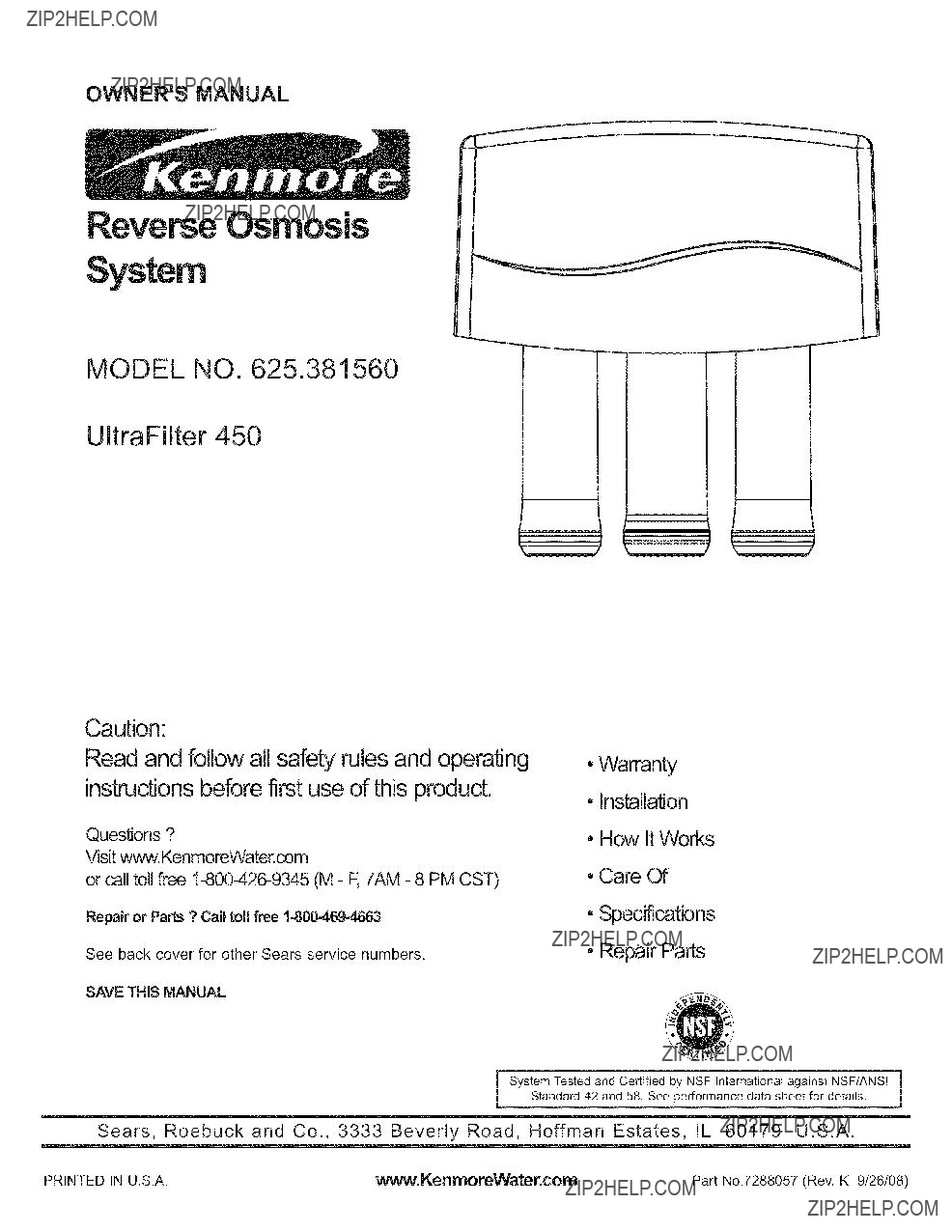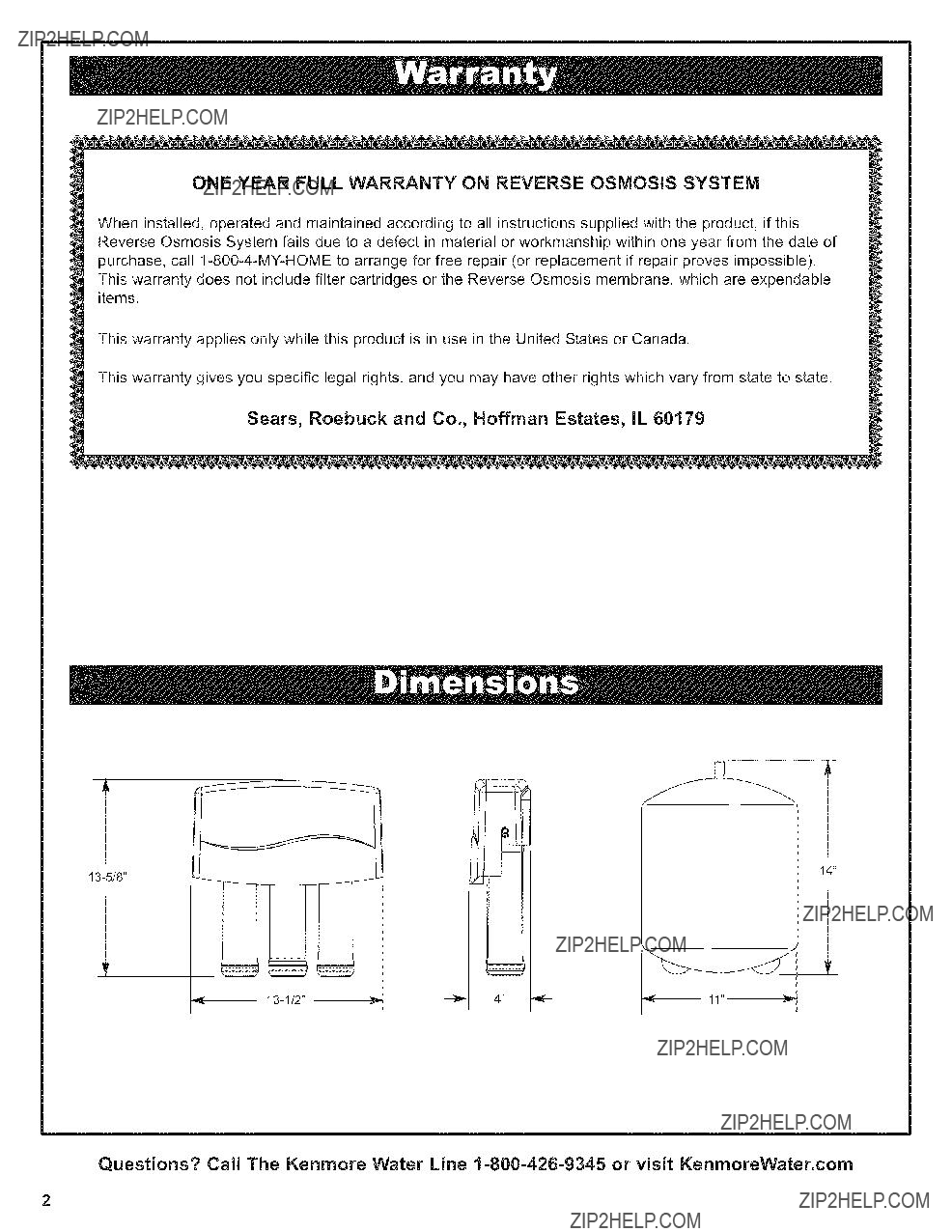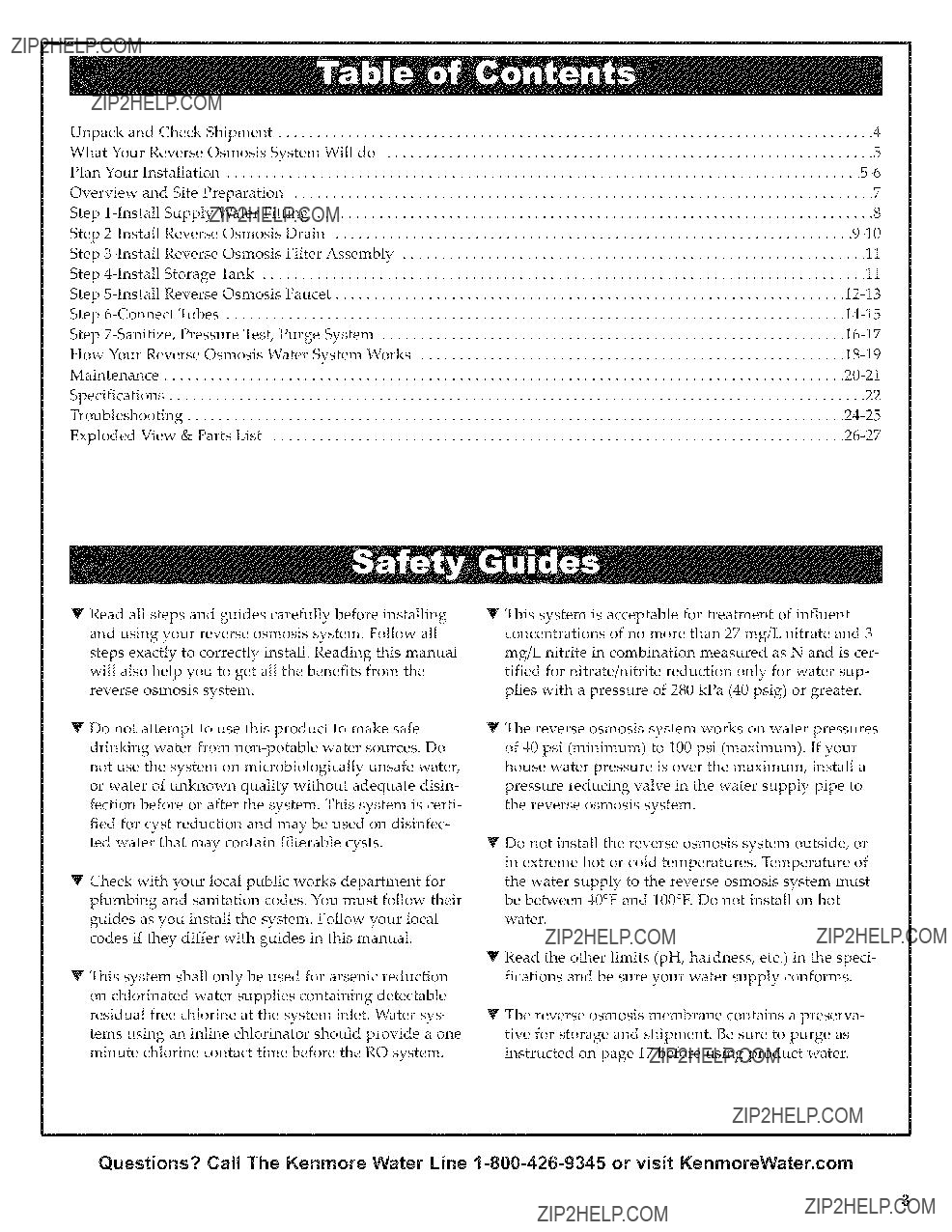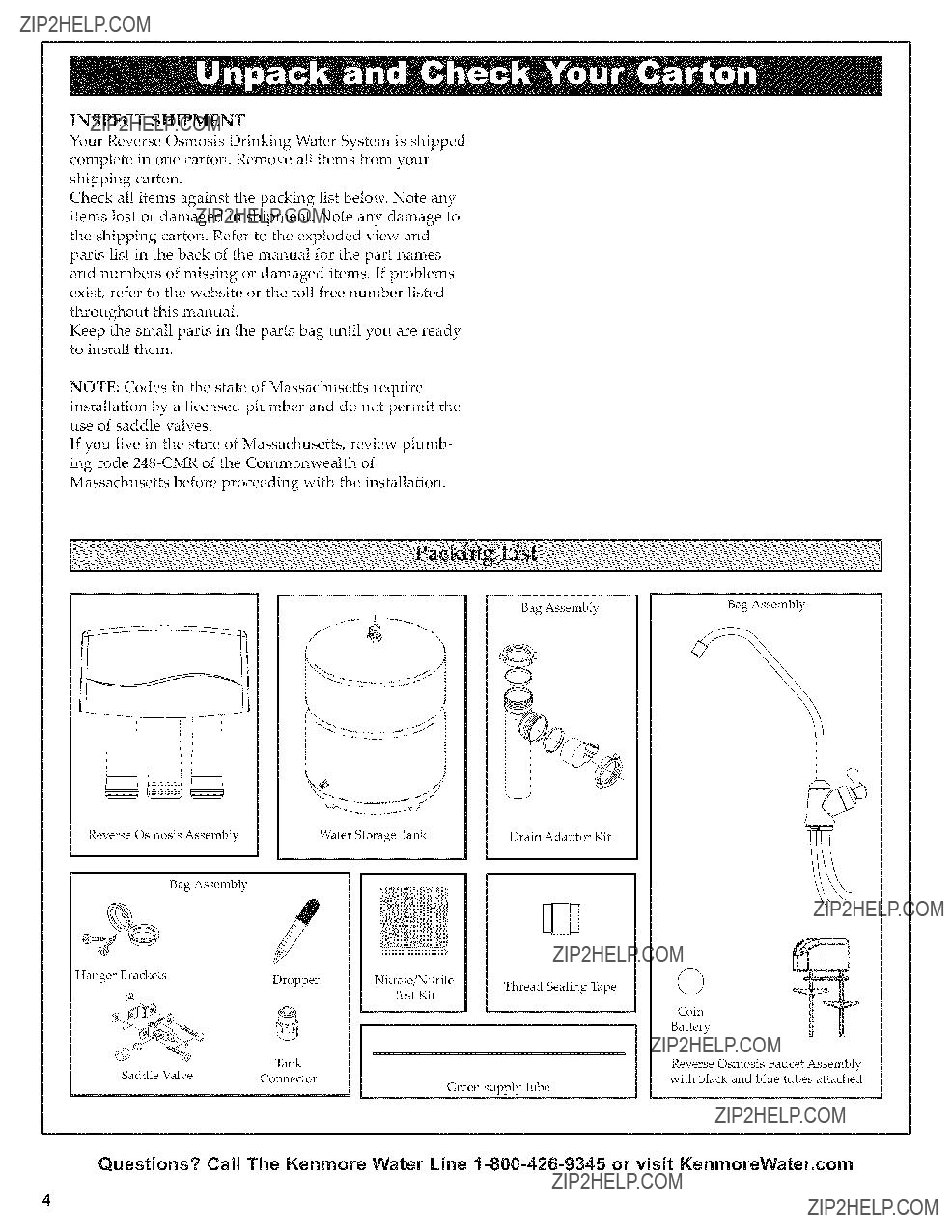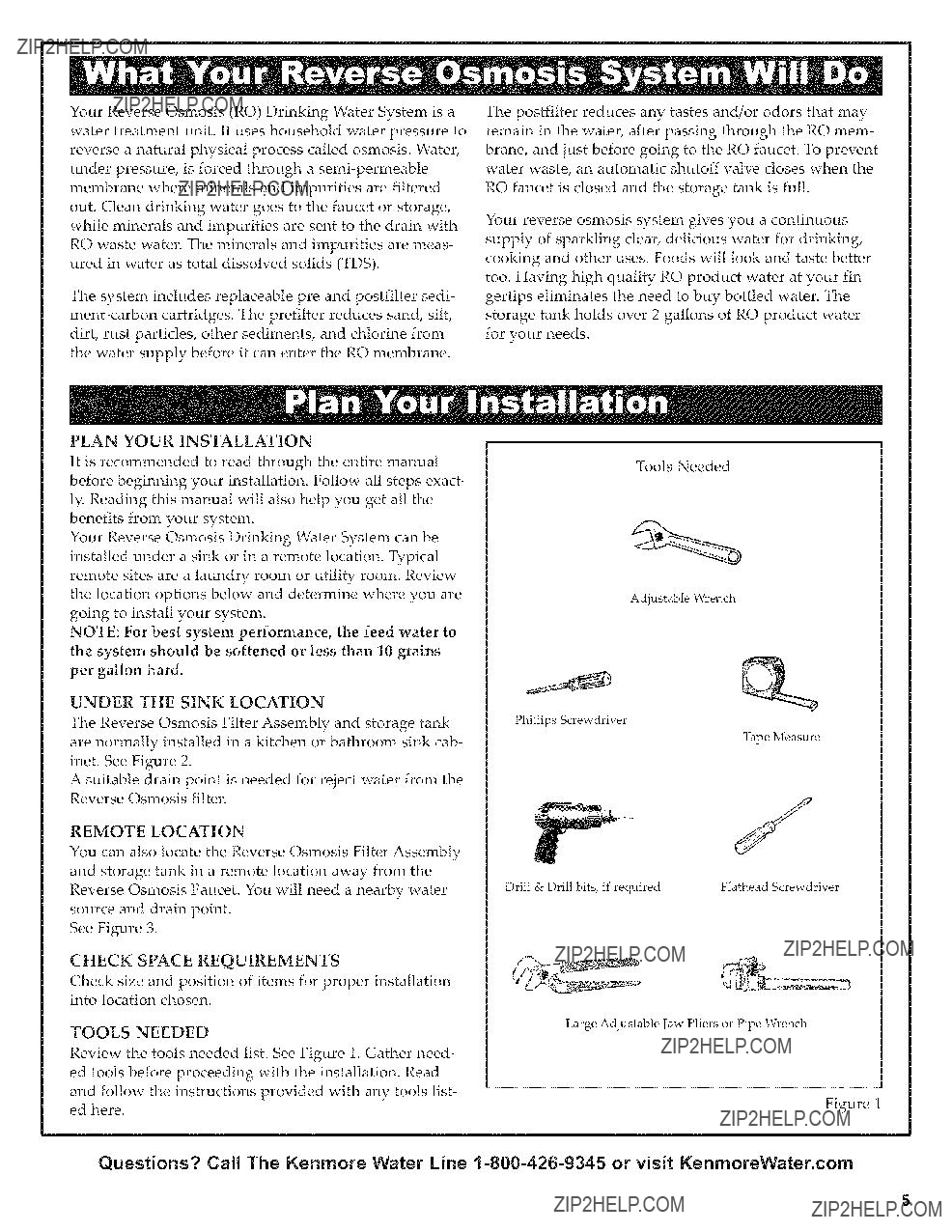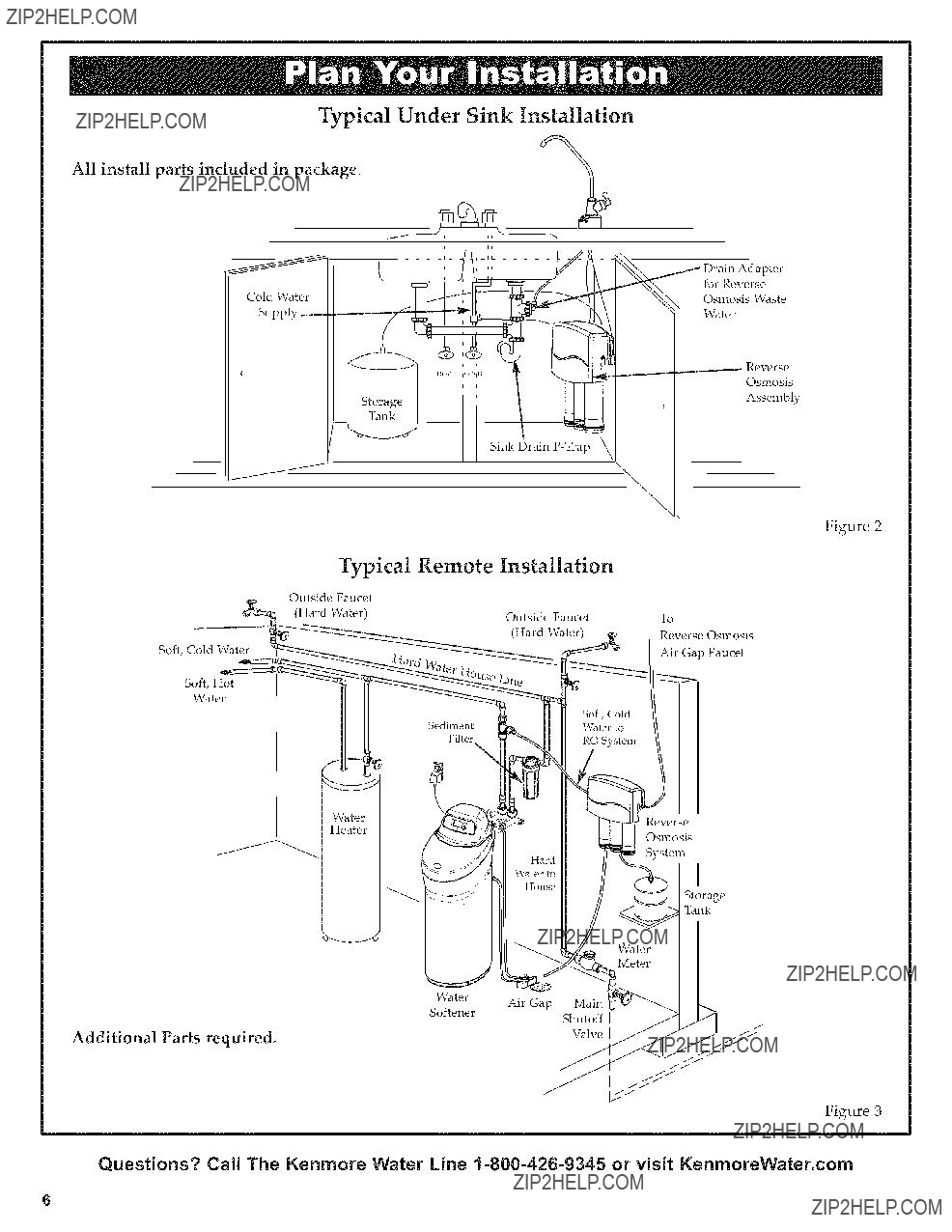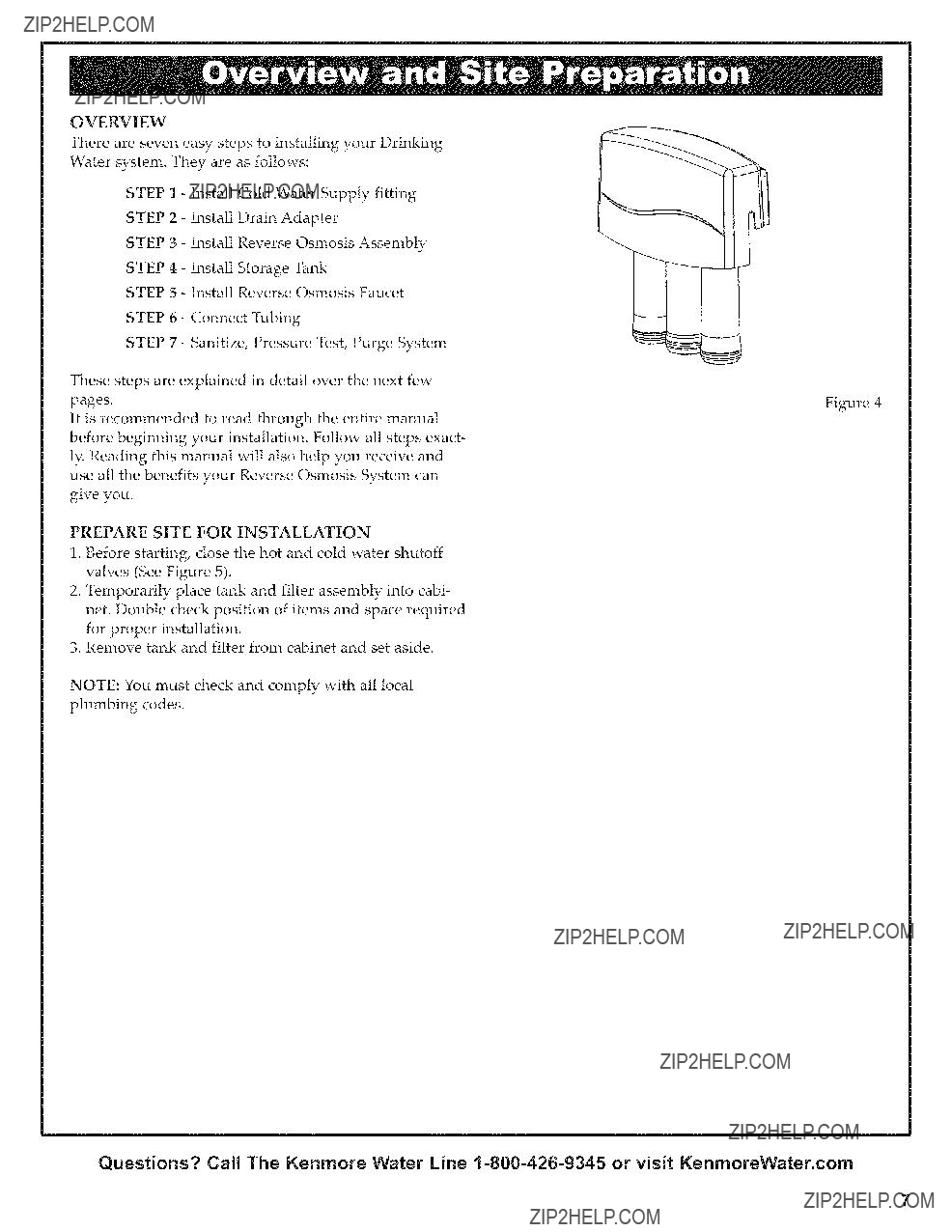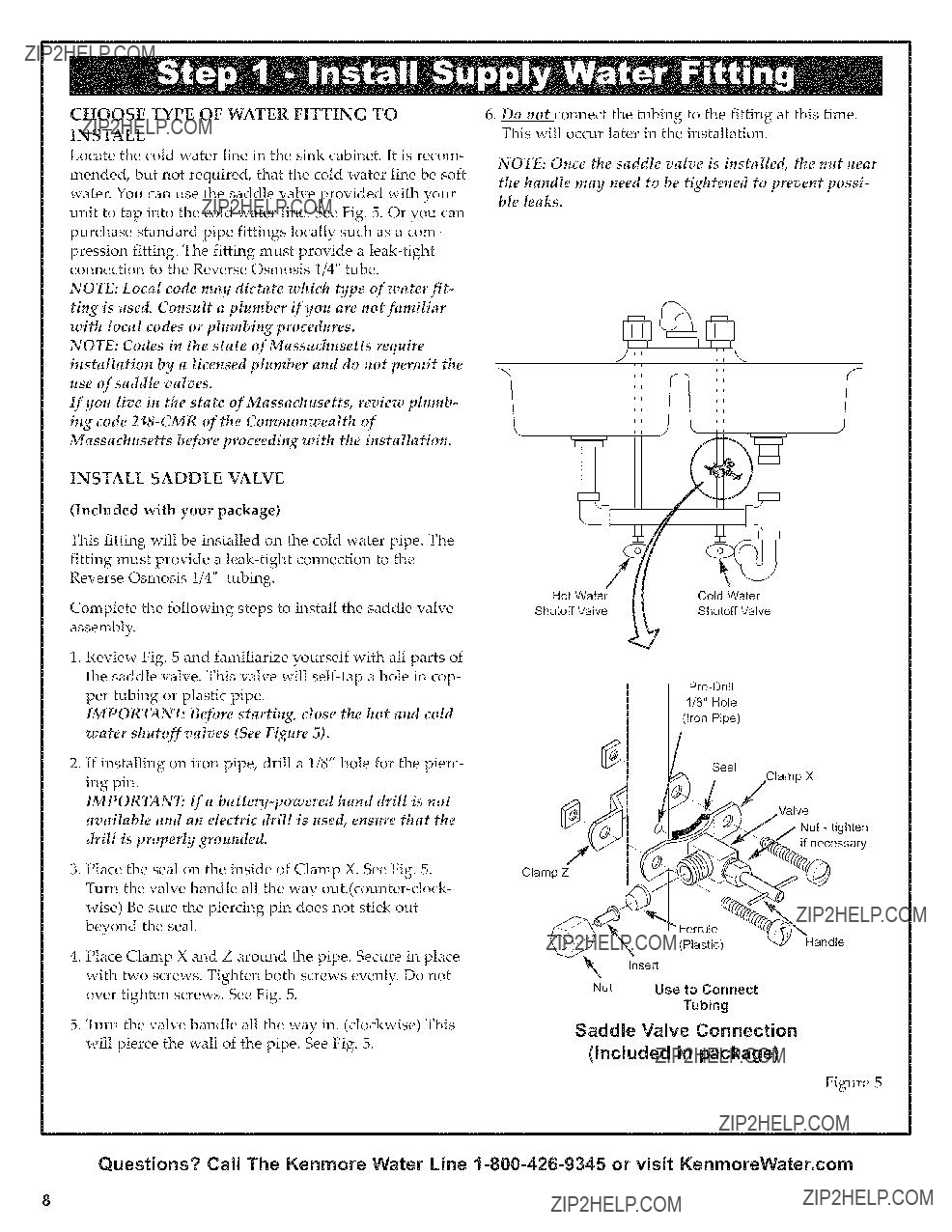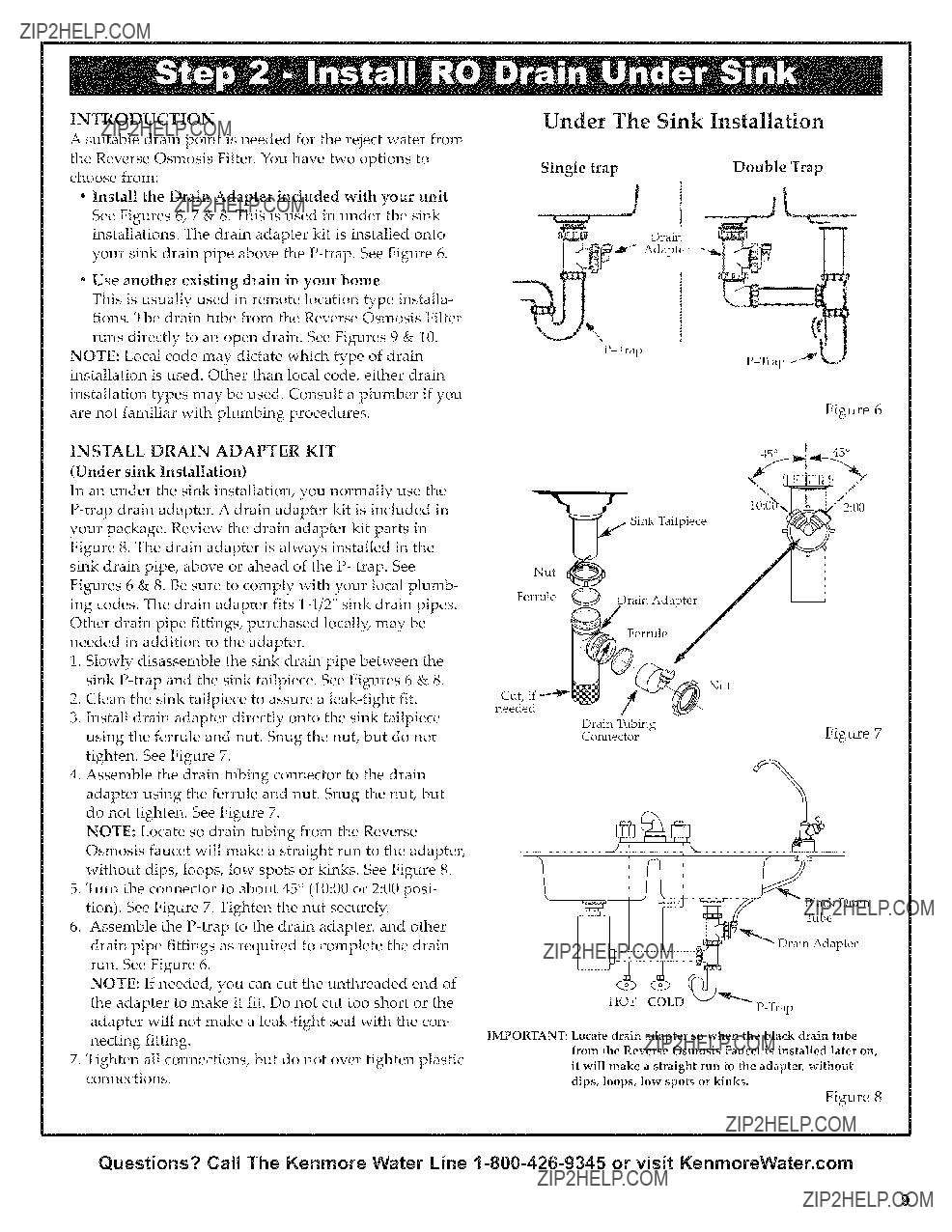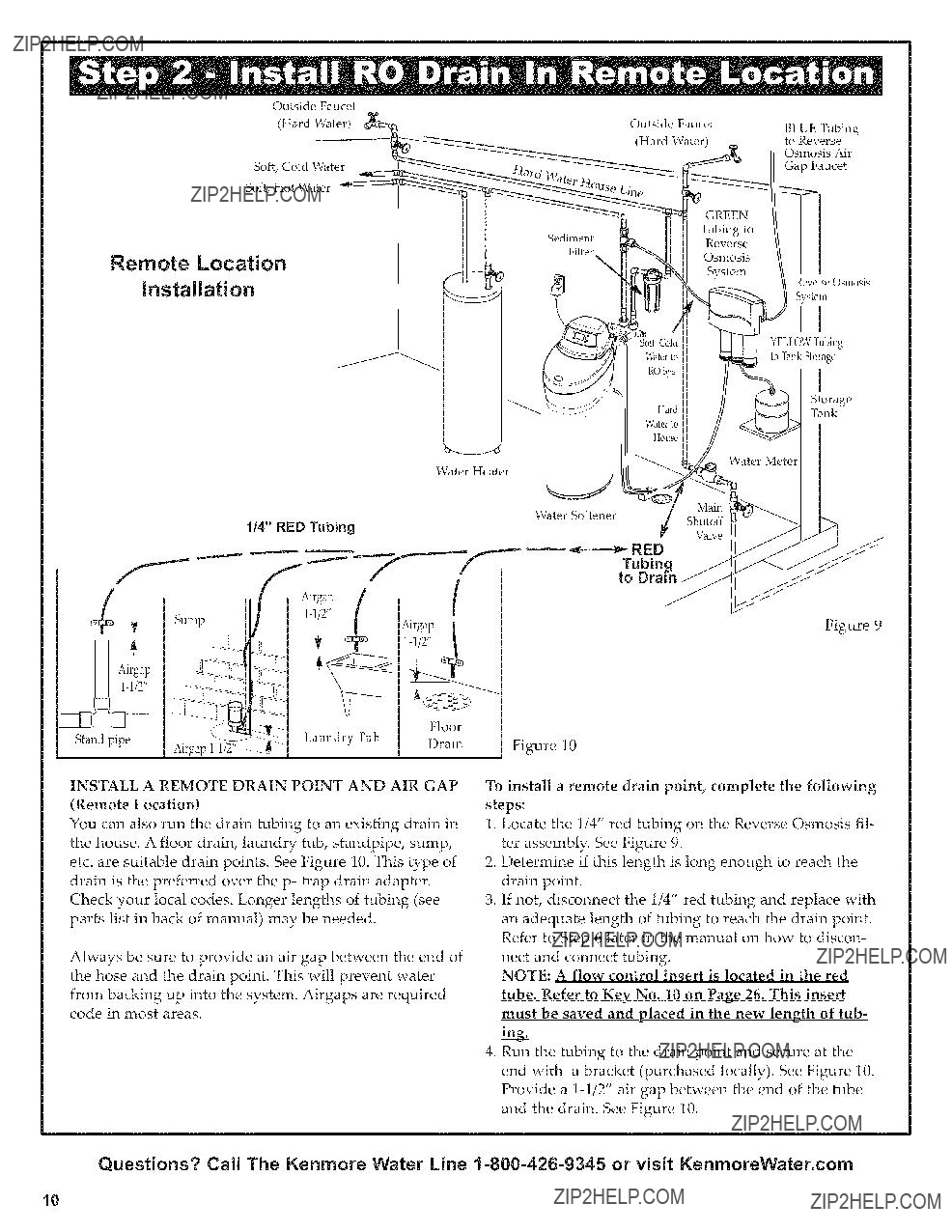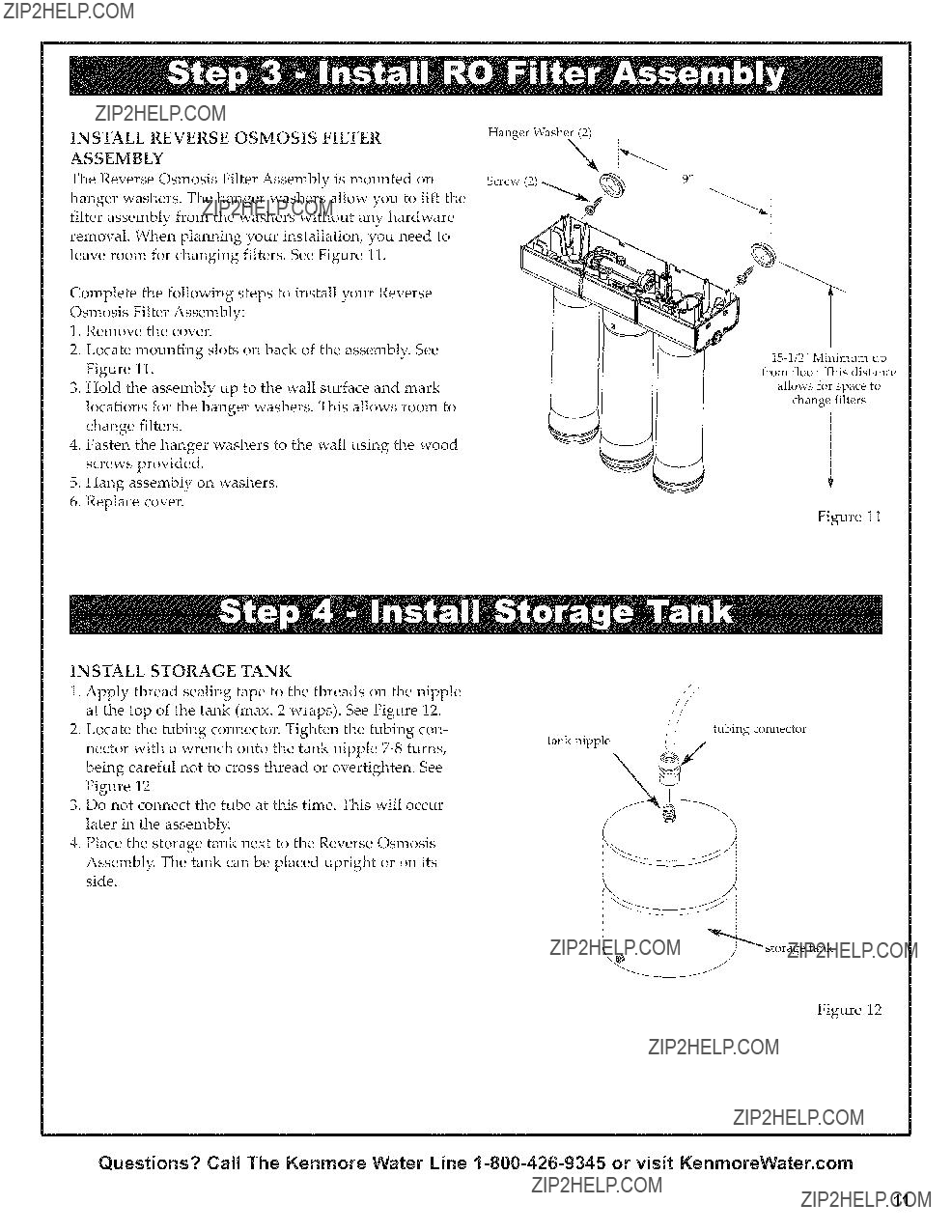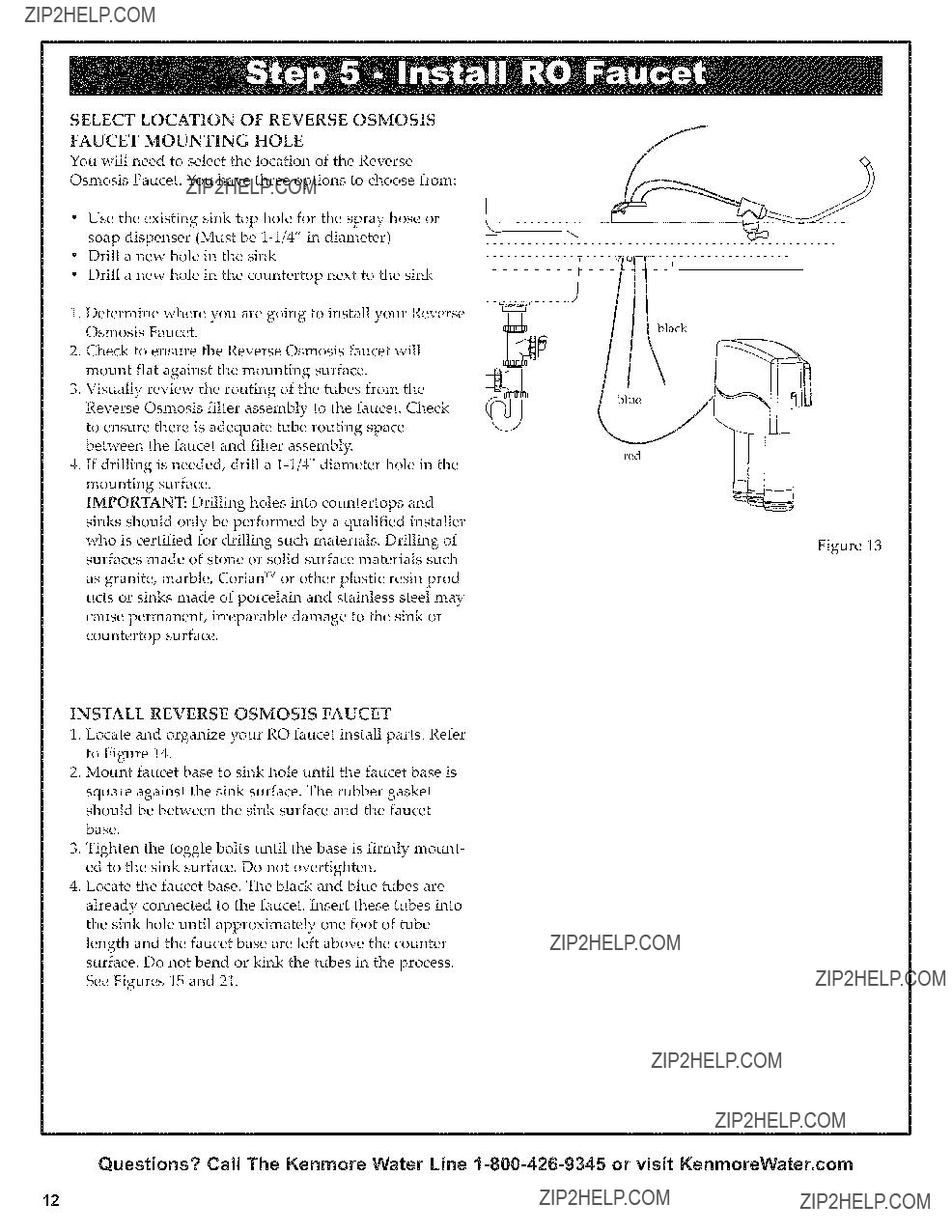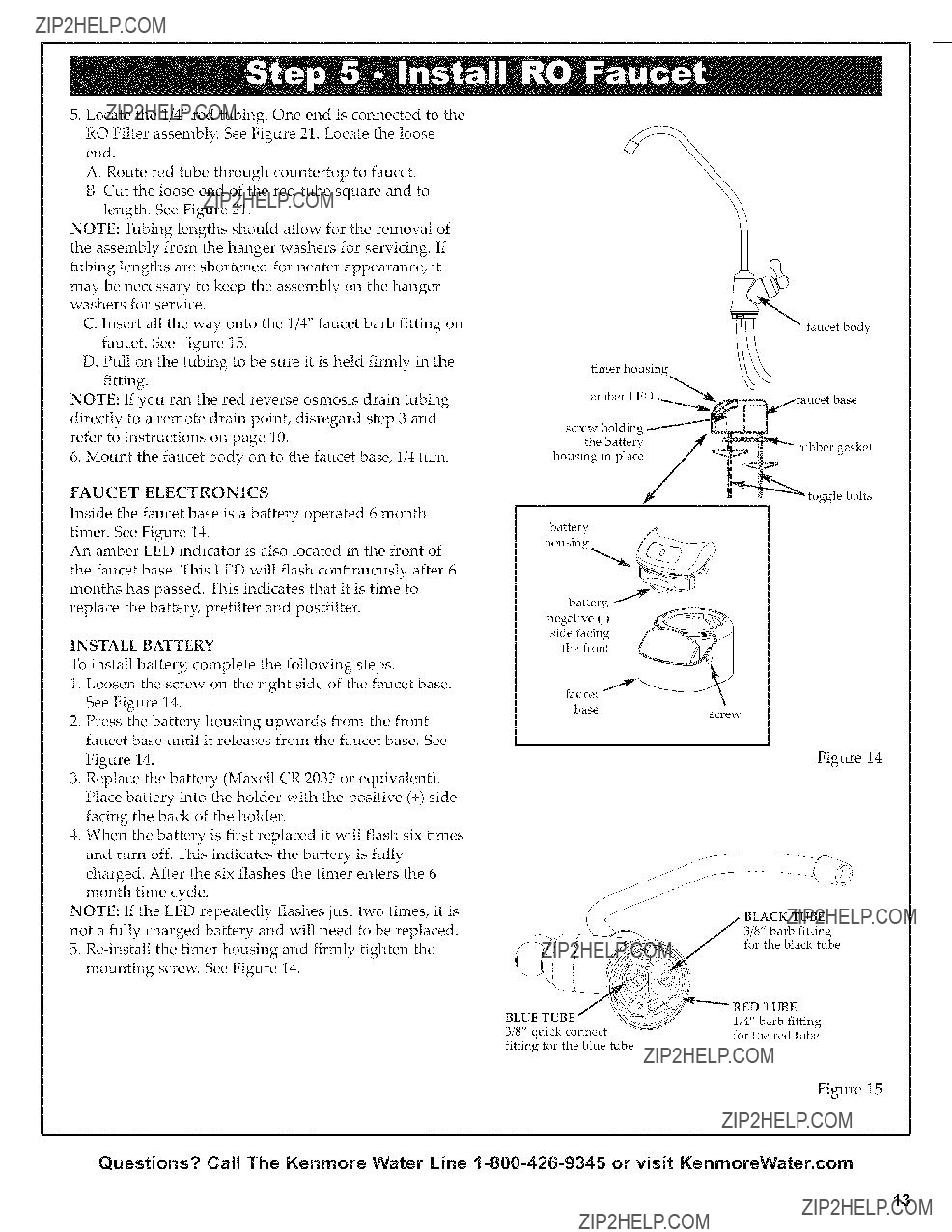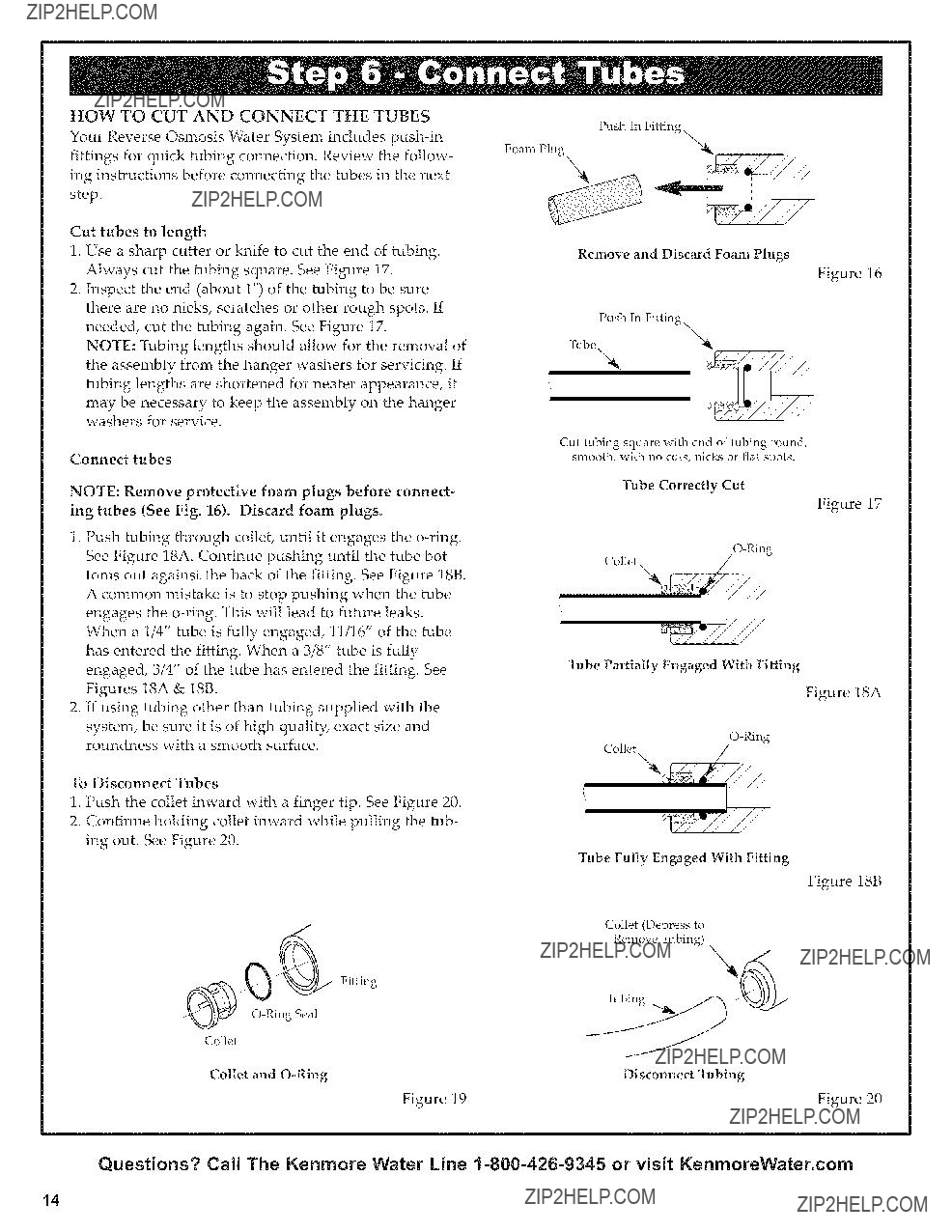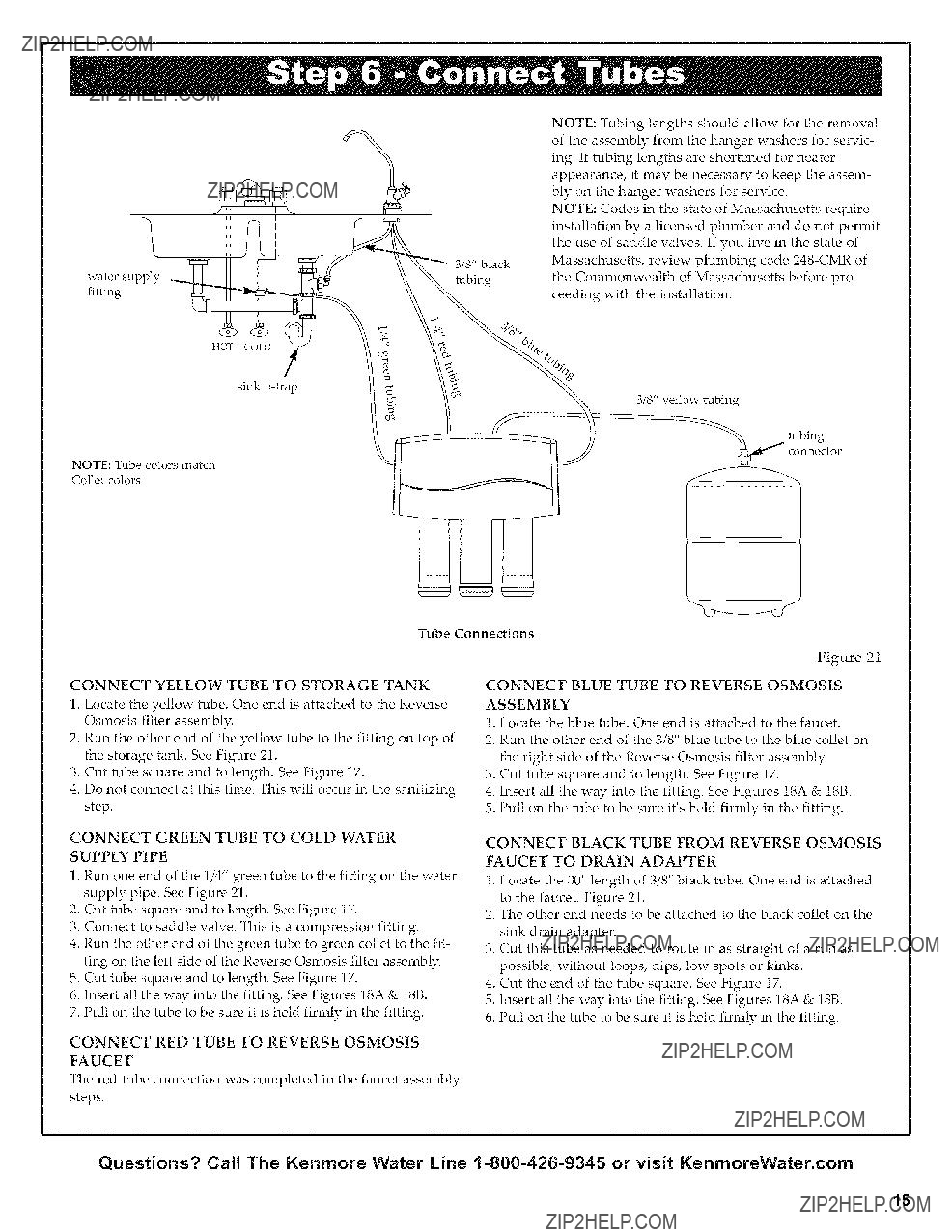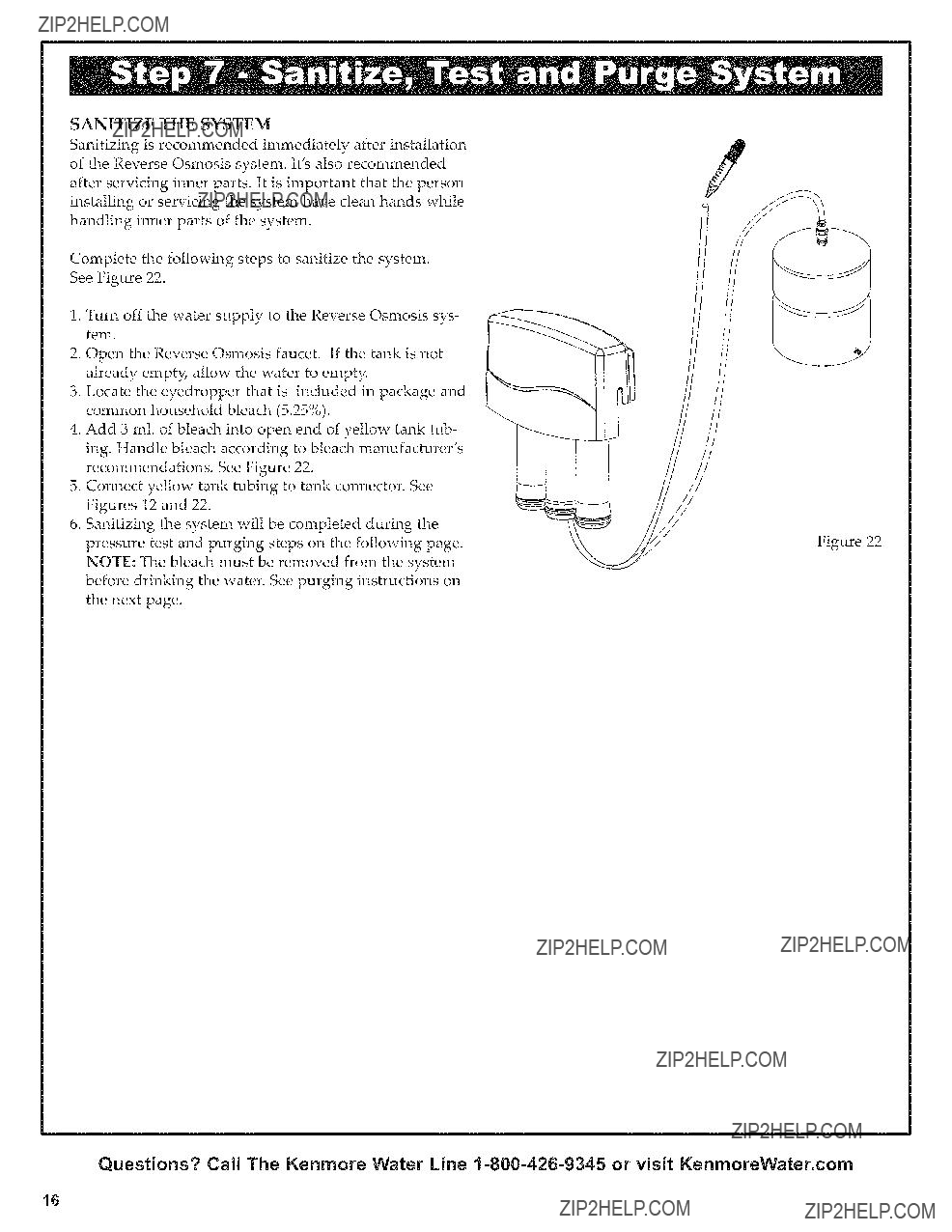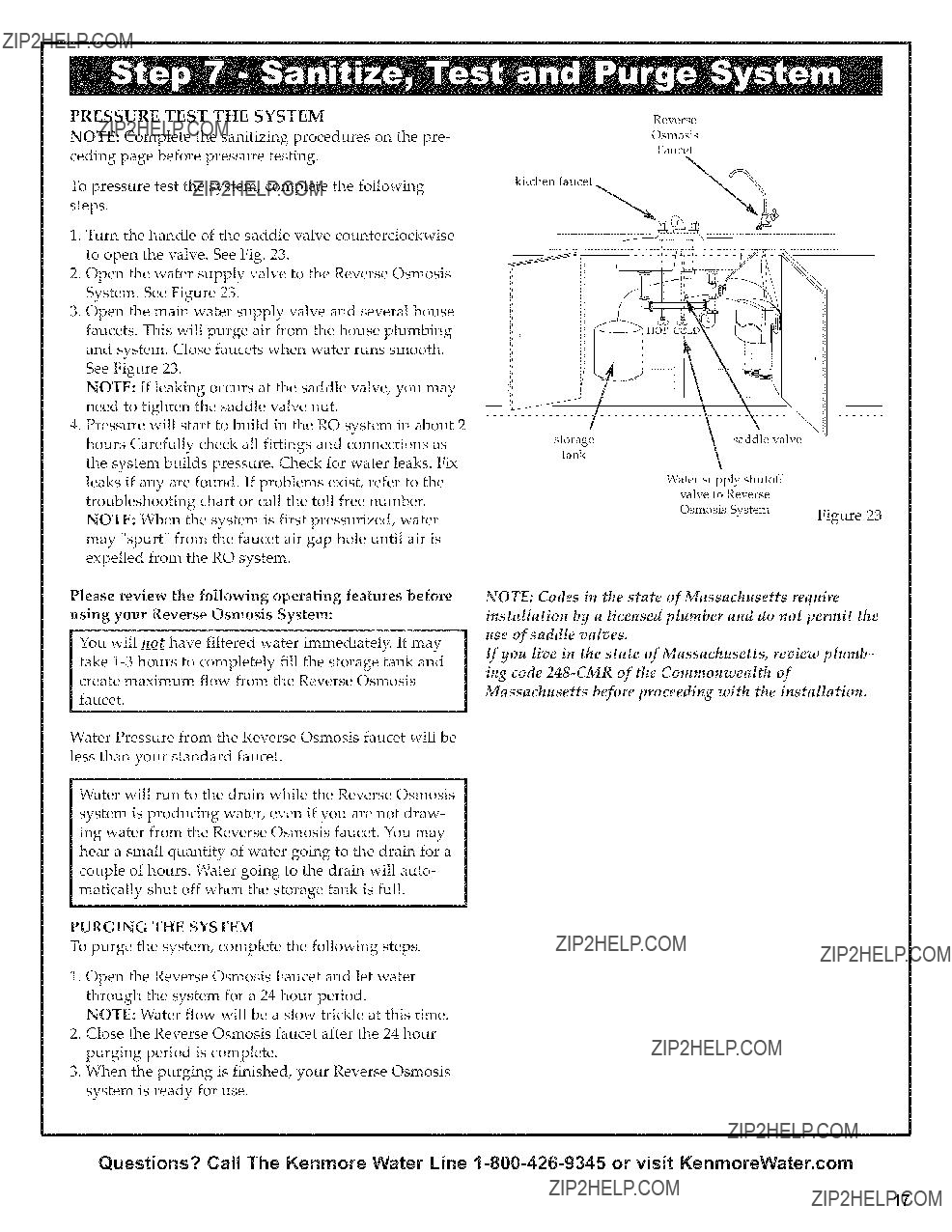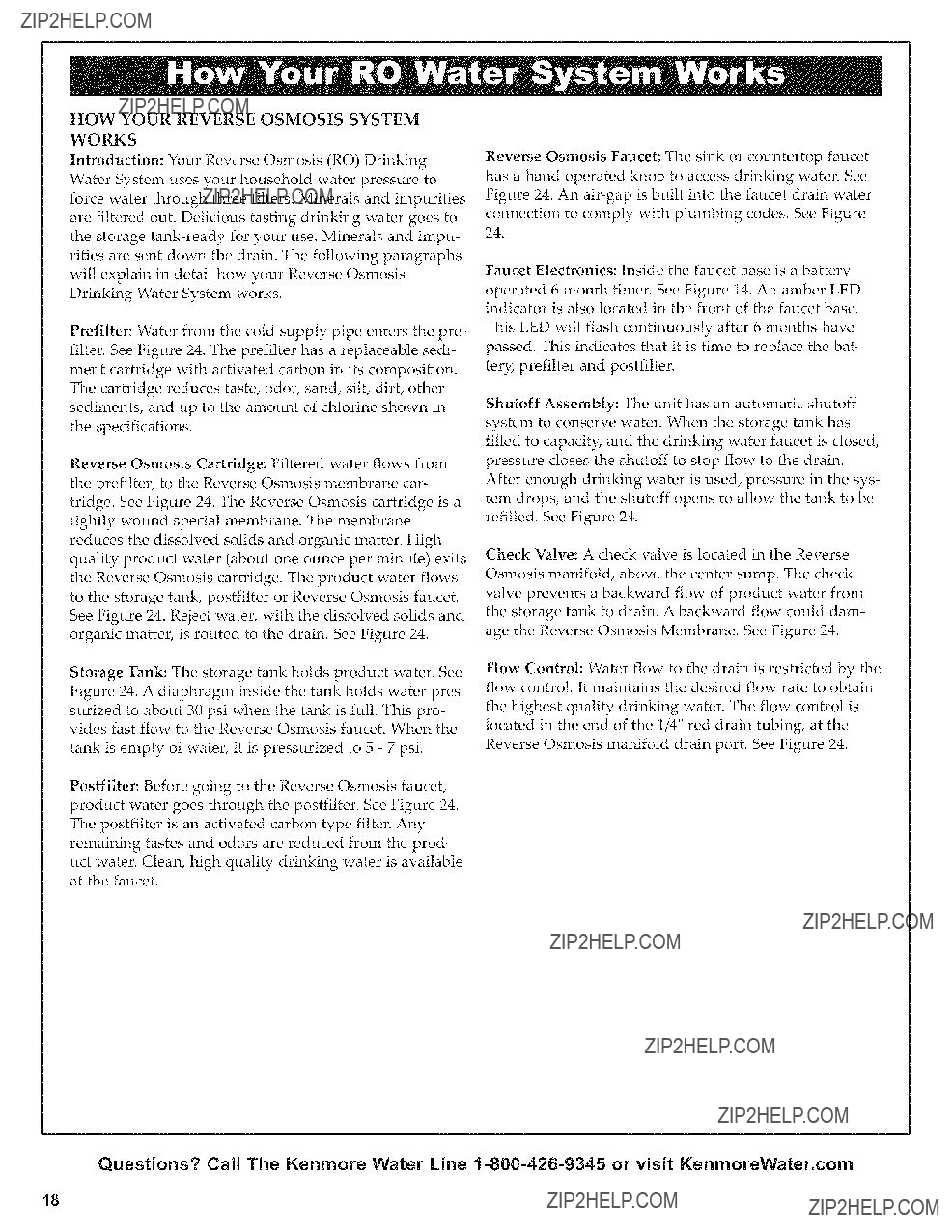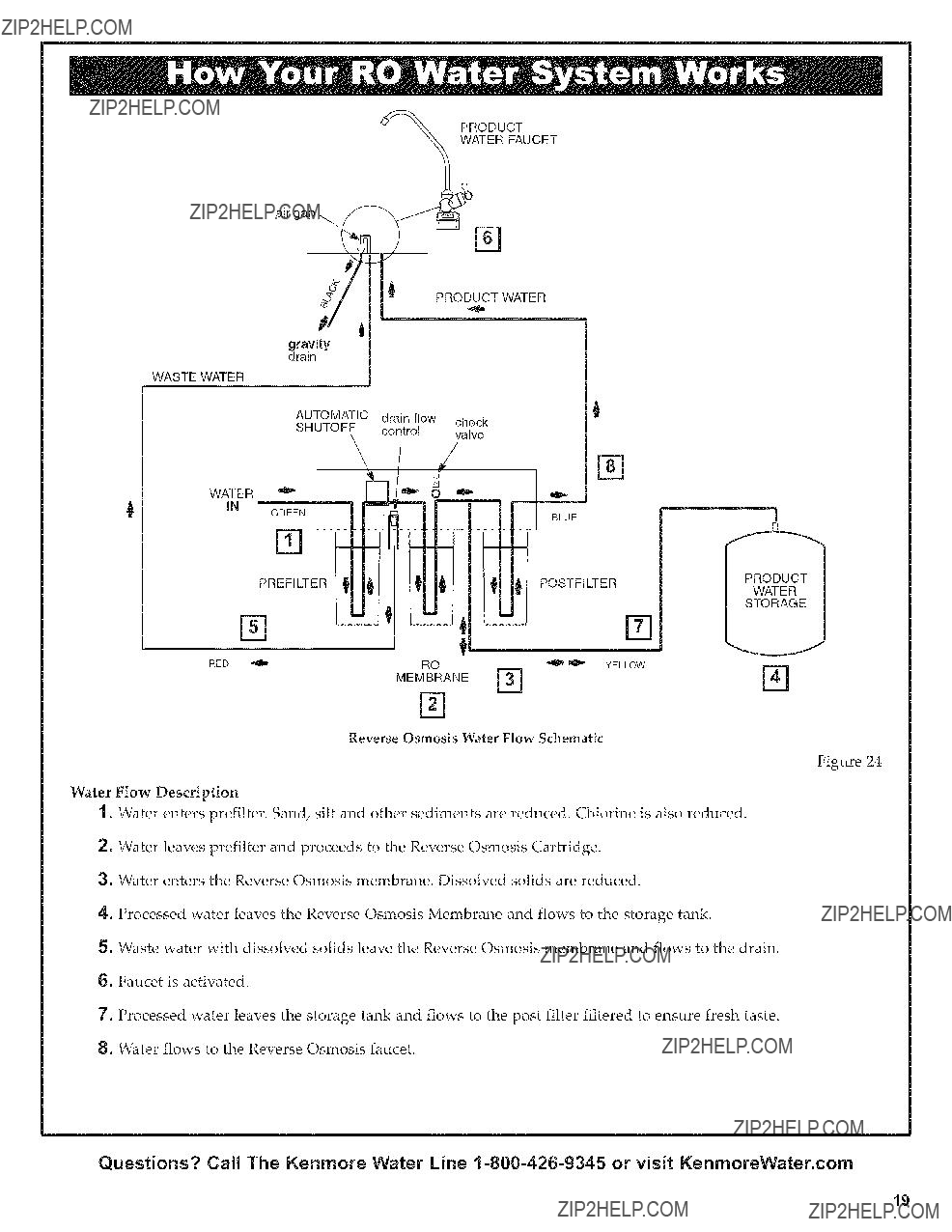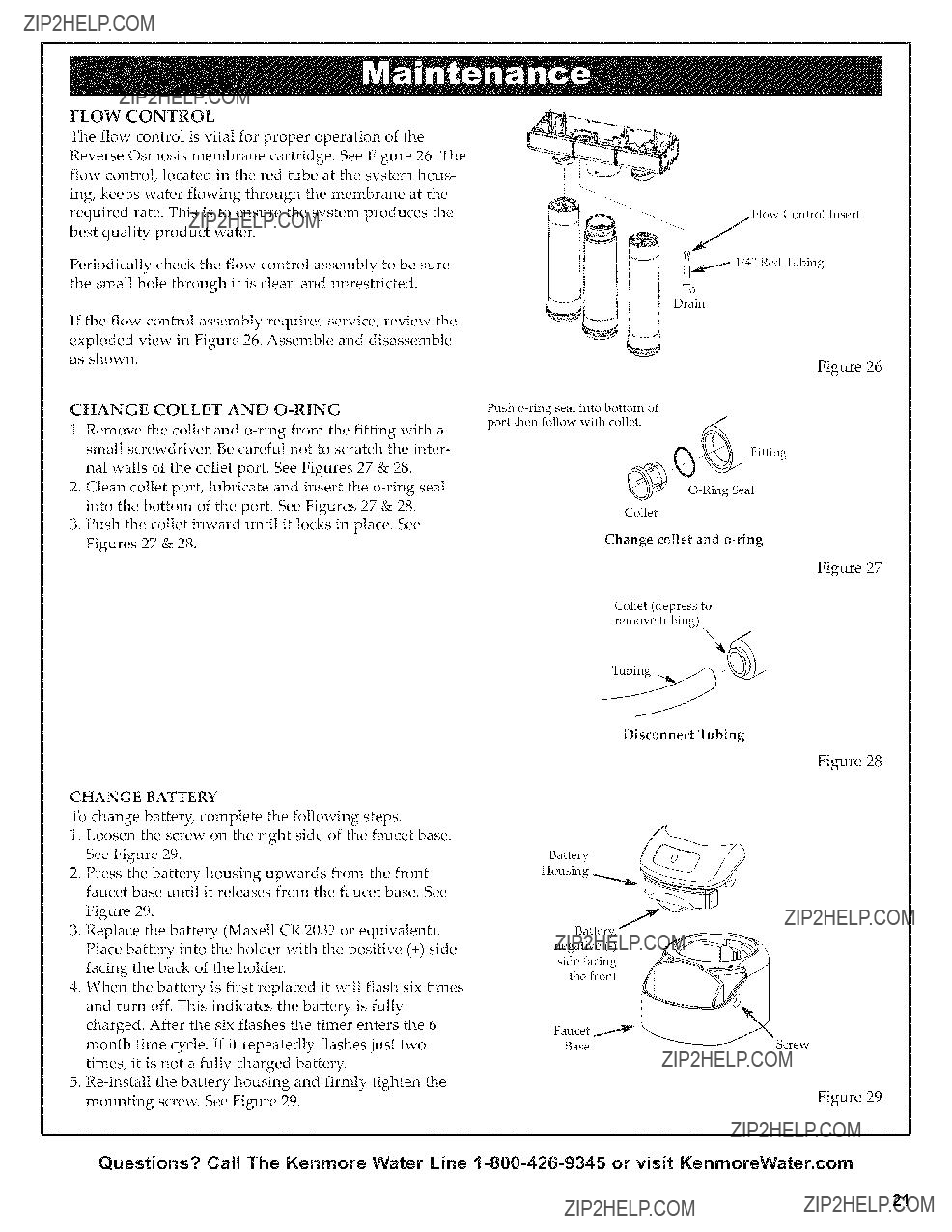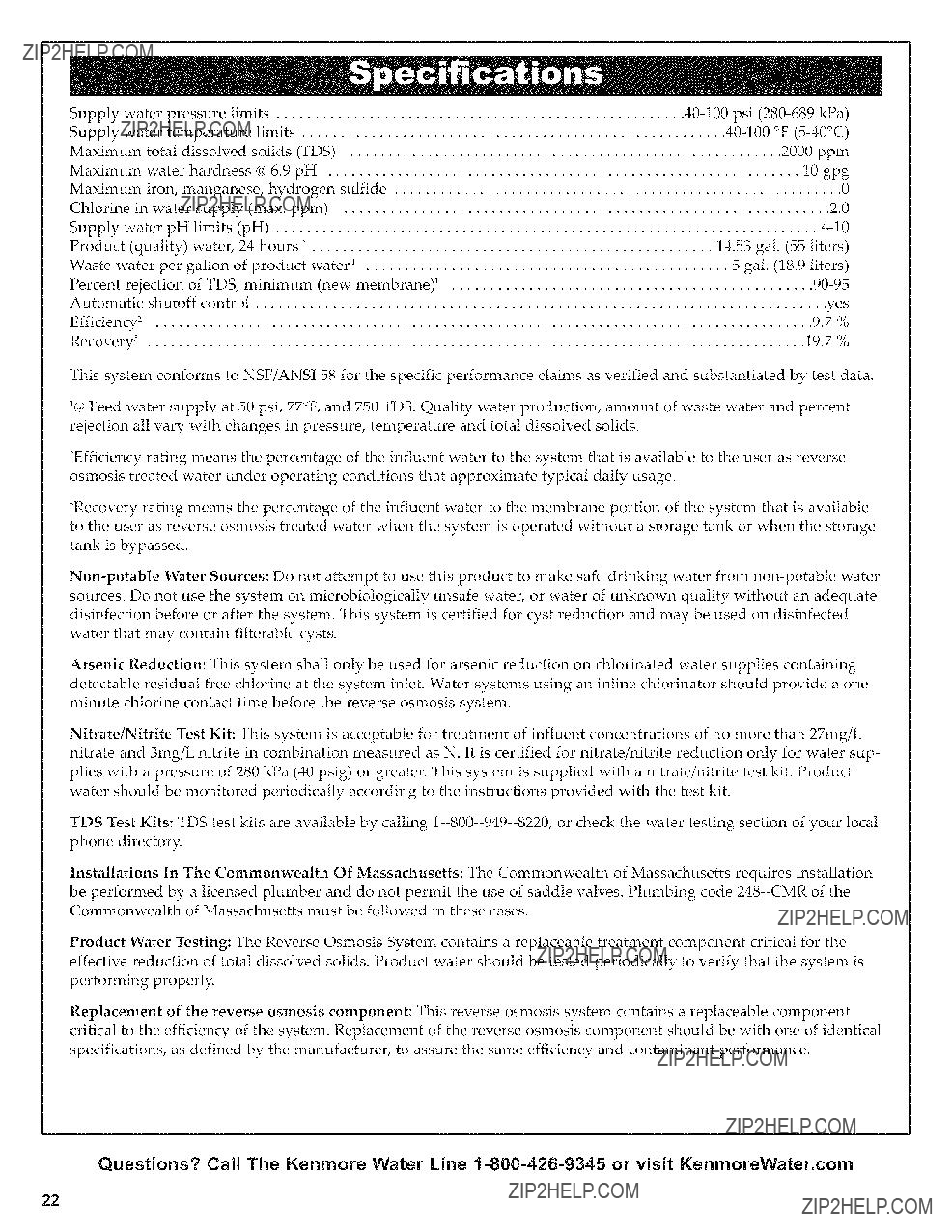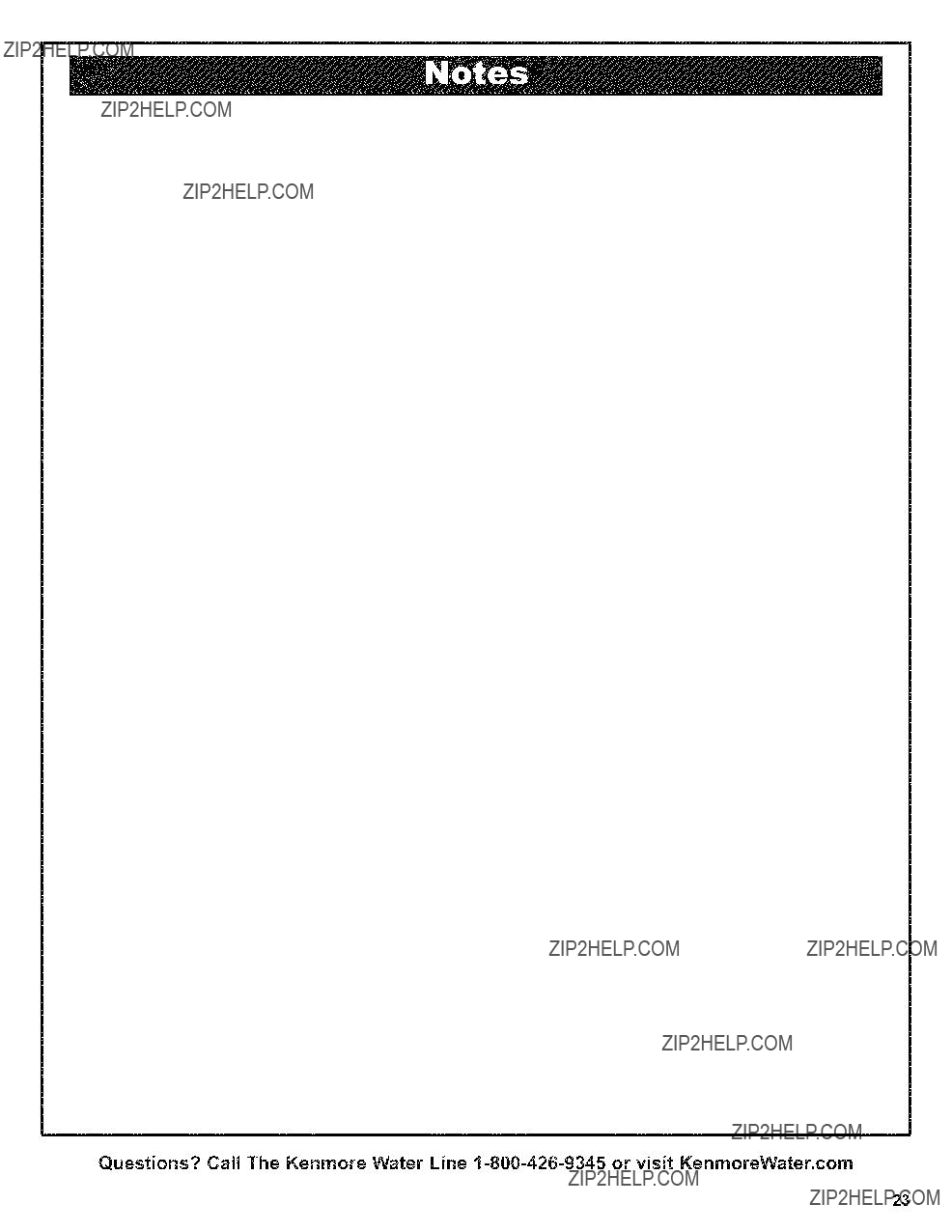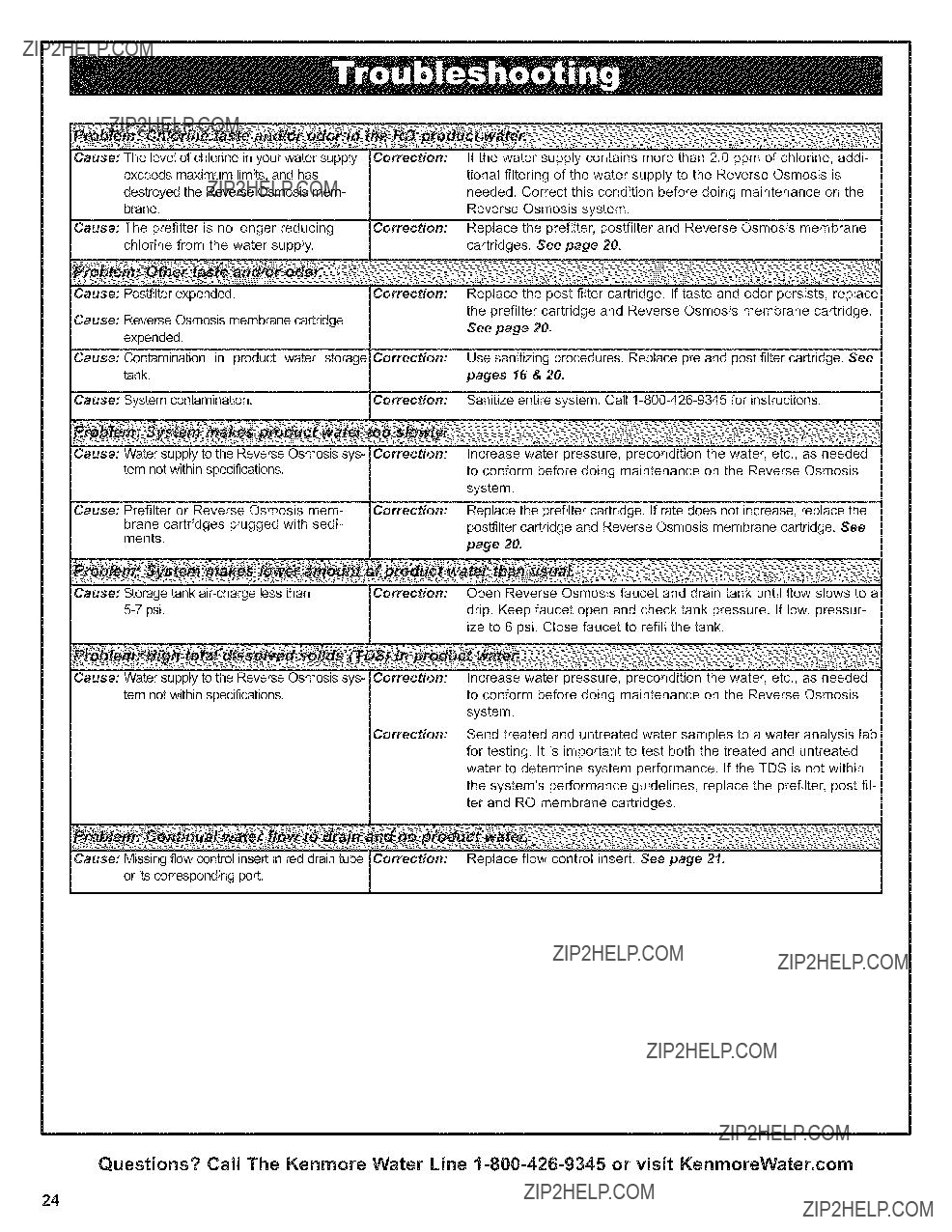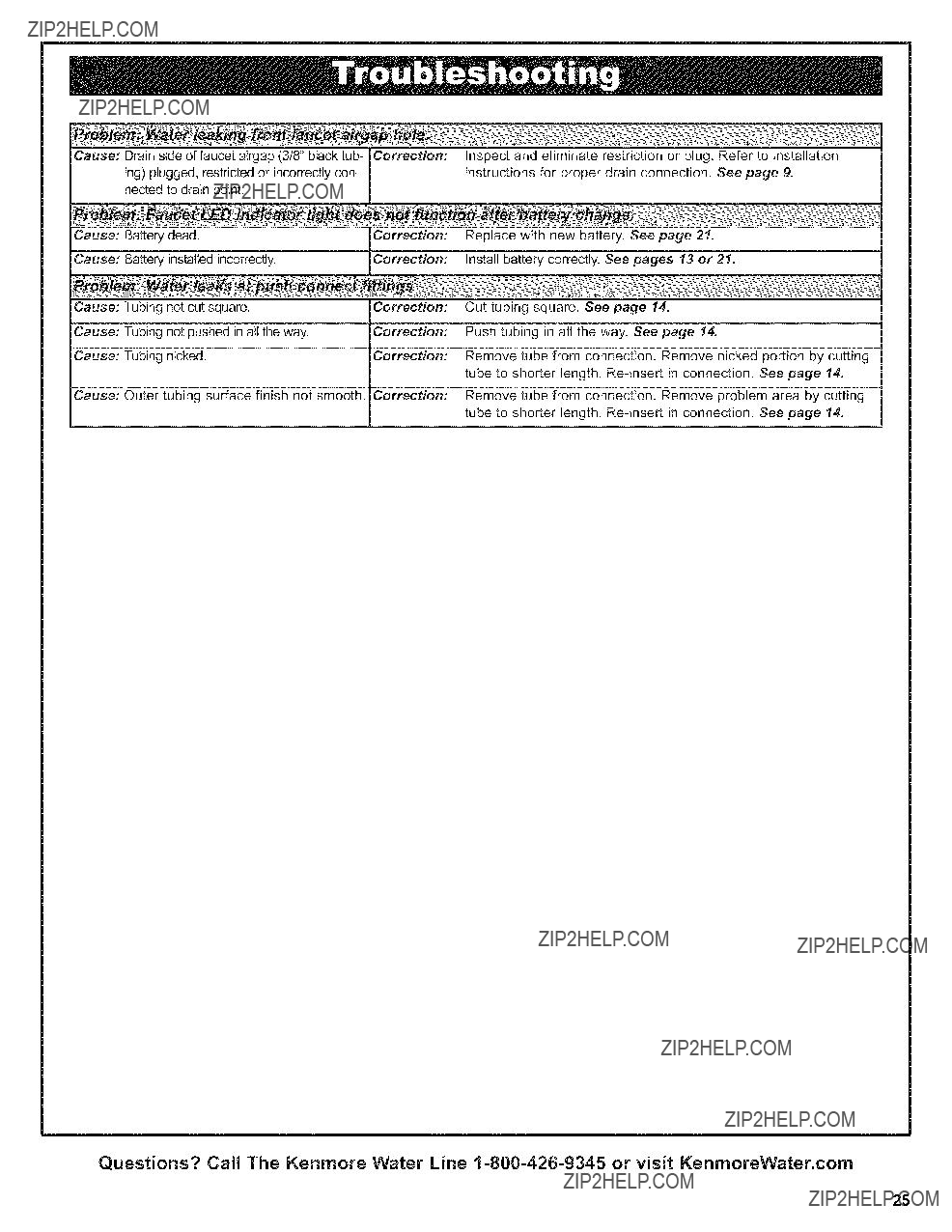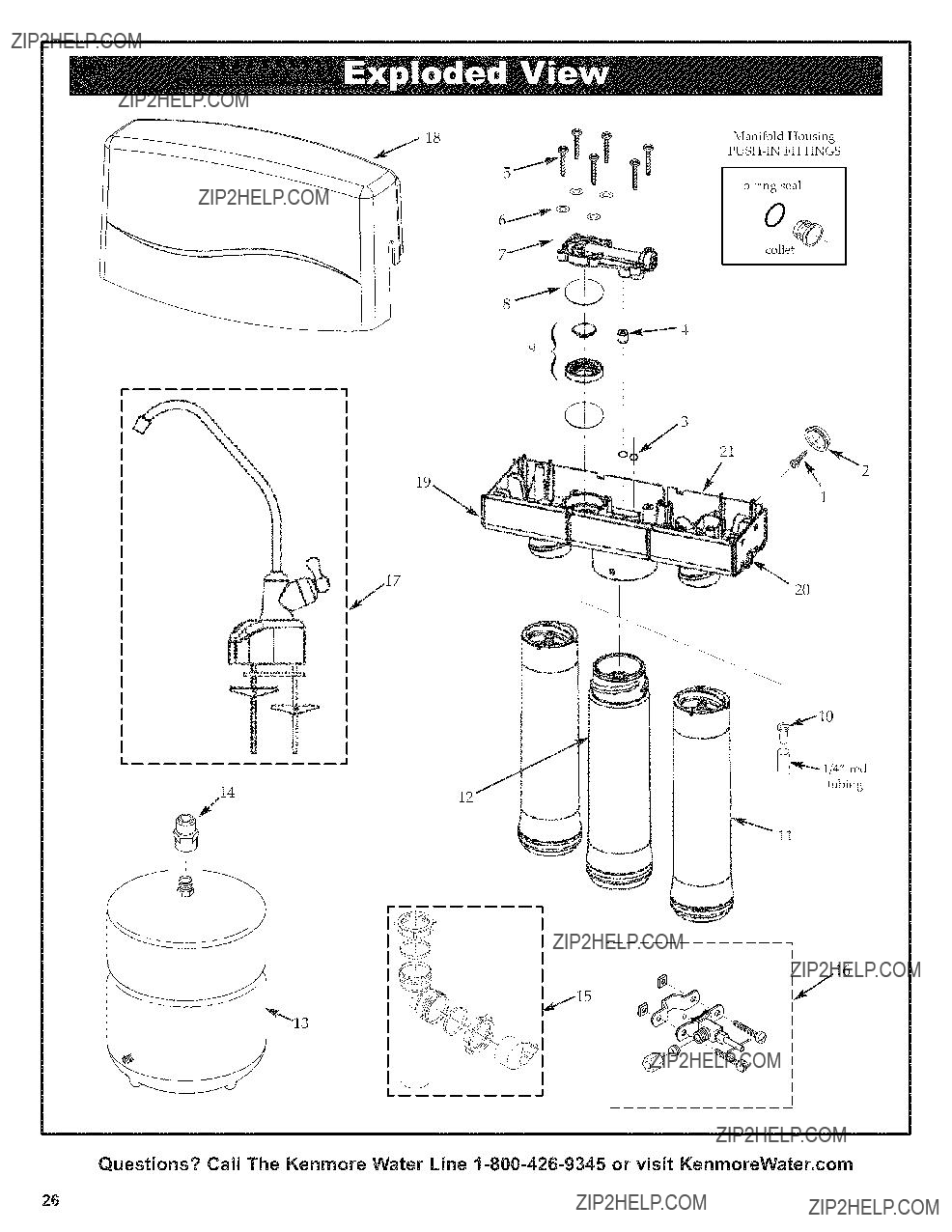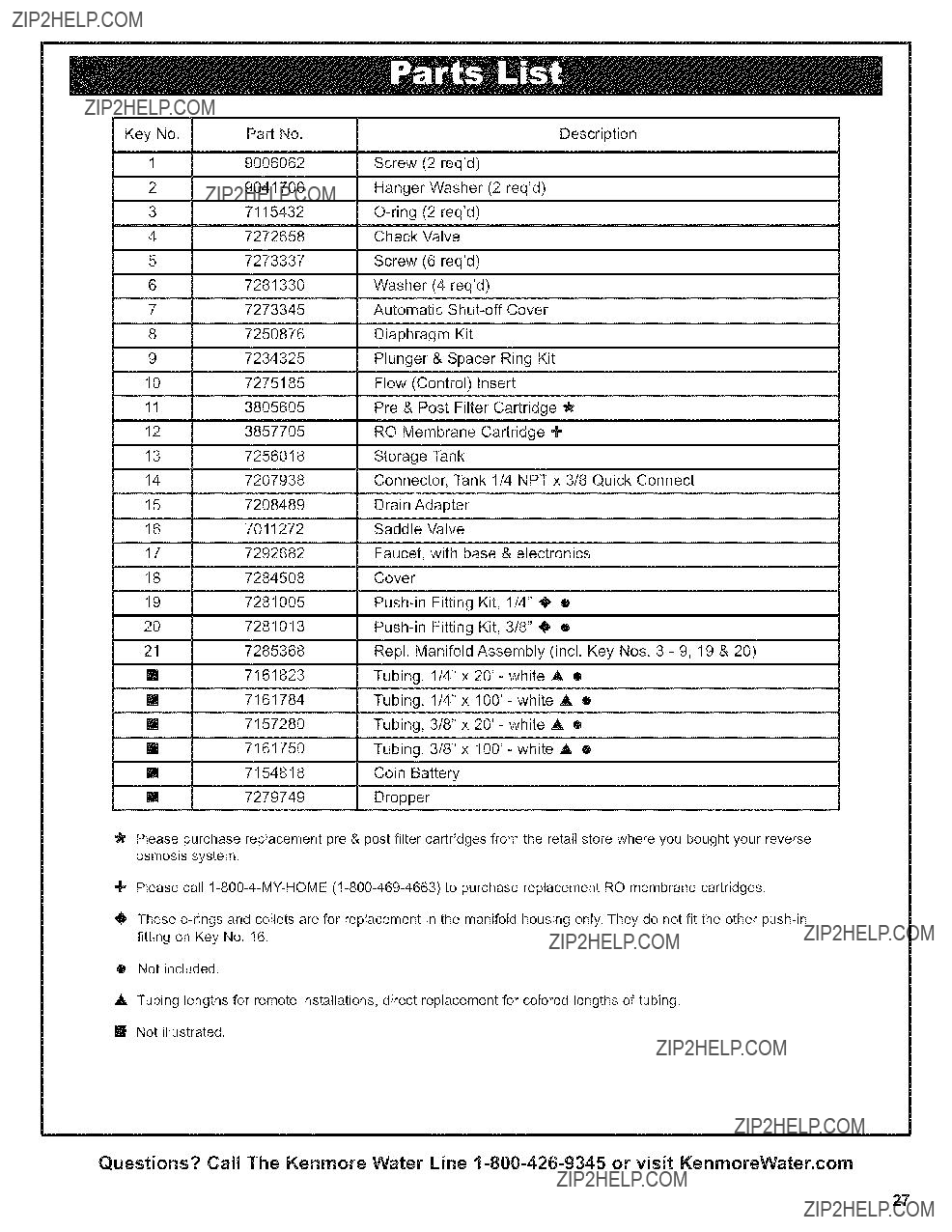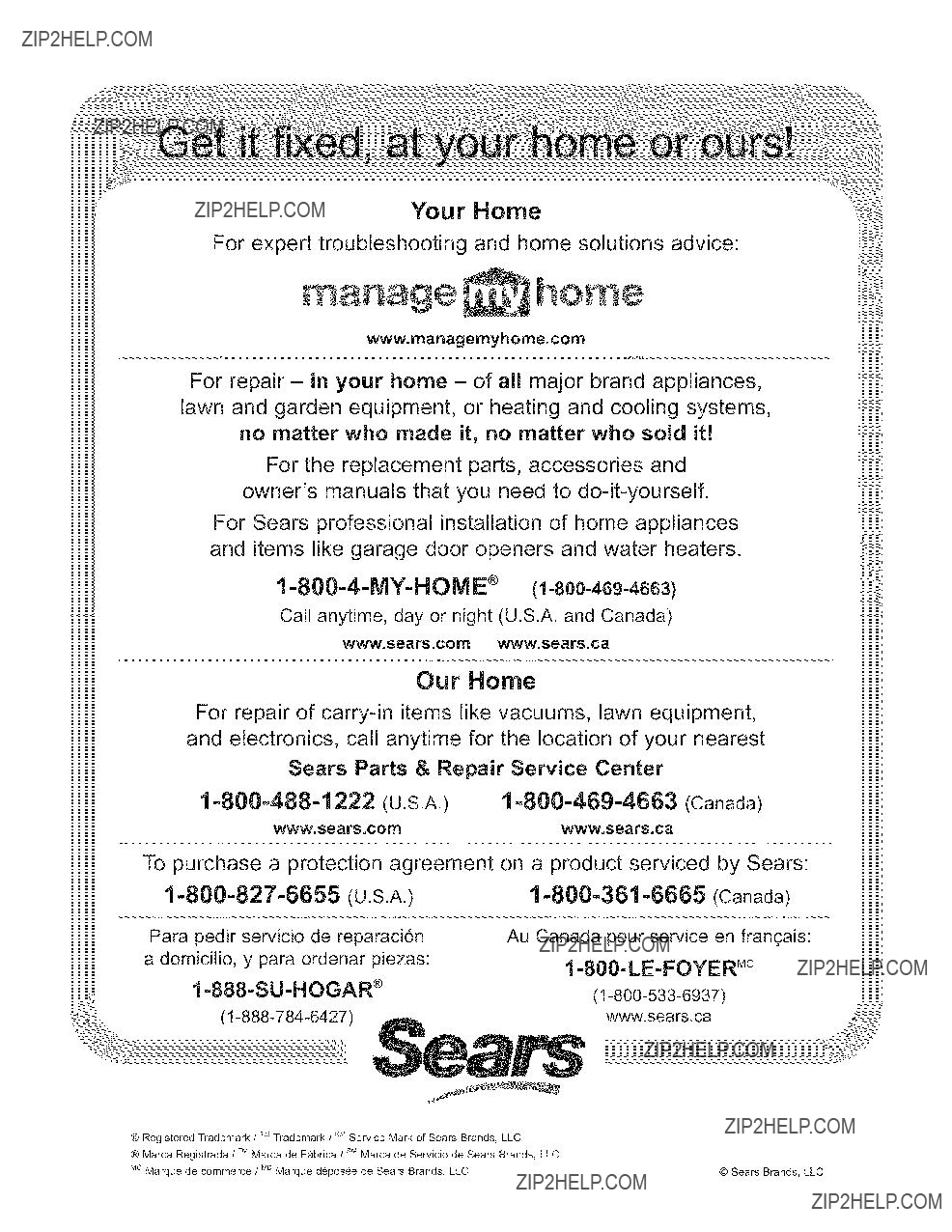INTRODUCTION
A suitable drain point is needed for the reject water from
the Reverse Osmosis Filter. You have two options to choose from:
*Install the Drain Adapter included with your unit See Figures 6, 7 & 8. This is used in under the sink installations. The drain adapter kit is installed onto your sink drain pipe above the P-trap. See Figure 6.
Use another existing drain in your home
This is usually used in remote location type installa- tions. The drain tube from the Reverse Osmosis Filter
runs directly to an open drain. See Figures 9 & 10. NOTE: Local code may dictate which type of drain installation is used. Other than local code, either drain installation types may be used. Consult a plumber if you are not familiar with plumbing procedures.
INSTALL DRAIN ADAPTER KIT (Under sink Installation)
in an under the sink installation, you normally use the P-trap drain adapter. A drain adapter kit is included in your package. Review the drain adapter kit parts in Figure 8. The drain adapter is always installed in the sink drain pipe, above or ahead of the P- trap. See Figures 6 & 8. Be sure to comply with your local plumb- ing codes. The drain adapter fits 1-1/2" sink drain pipes. Other drain pipe fittings, purchased locally, may be needed in addition to the adapter.
1.Slowly disassemble the sink drain pipe between the sink P-trap and the sink tailpiece. See Figures 6 & 8.
2.Clean the sink tailpiece to assure a leak-tight fit.
3.install drain adapter directly onto the sink tailpiece using the ferrule and nut. Snug the nut, but do not tighten. See Figure 7.
4.Assemble the drain tubing connector to the drain adapter using the ferrule and nut. Snug the nut, but do not tighten. See Figure 7.
NOTE: Locate so drain tubing from the Reverse Osmosis faucet will make a straight run to the adapter, without dips, loops, low spots or kinks. See Figure 8.
5.Turn the connector to about 45 ?? (10:00 or 2:00 posi- tion). See Figure 7. Tighten the nut securely.
6.Assemble the P-trap to the drain adapter, and other drain pipe fittings as required to complete the drain run. See Figure 6.
NOTE: If needed, you can cut the unthreaded end of the adapter to make it fit. Do not cut too short or the adapter will not make a leak-tight seal with the con- necting fitting.
7.Tighten all connections, but do not over tighten plastic connections.
Under The Sink Installation
Drain
_J Adapter
P-Trap
Figure 6
IMPORTANT: Locate drain adapter so when the black drain tube from the Reverse Osmosis Faucet is installed later on, it will make a straight run to the adapter, without
dips, loops, low spots or kinks.
Figure 8
